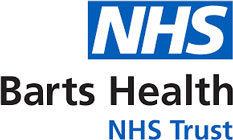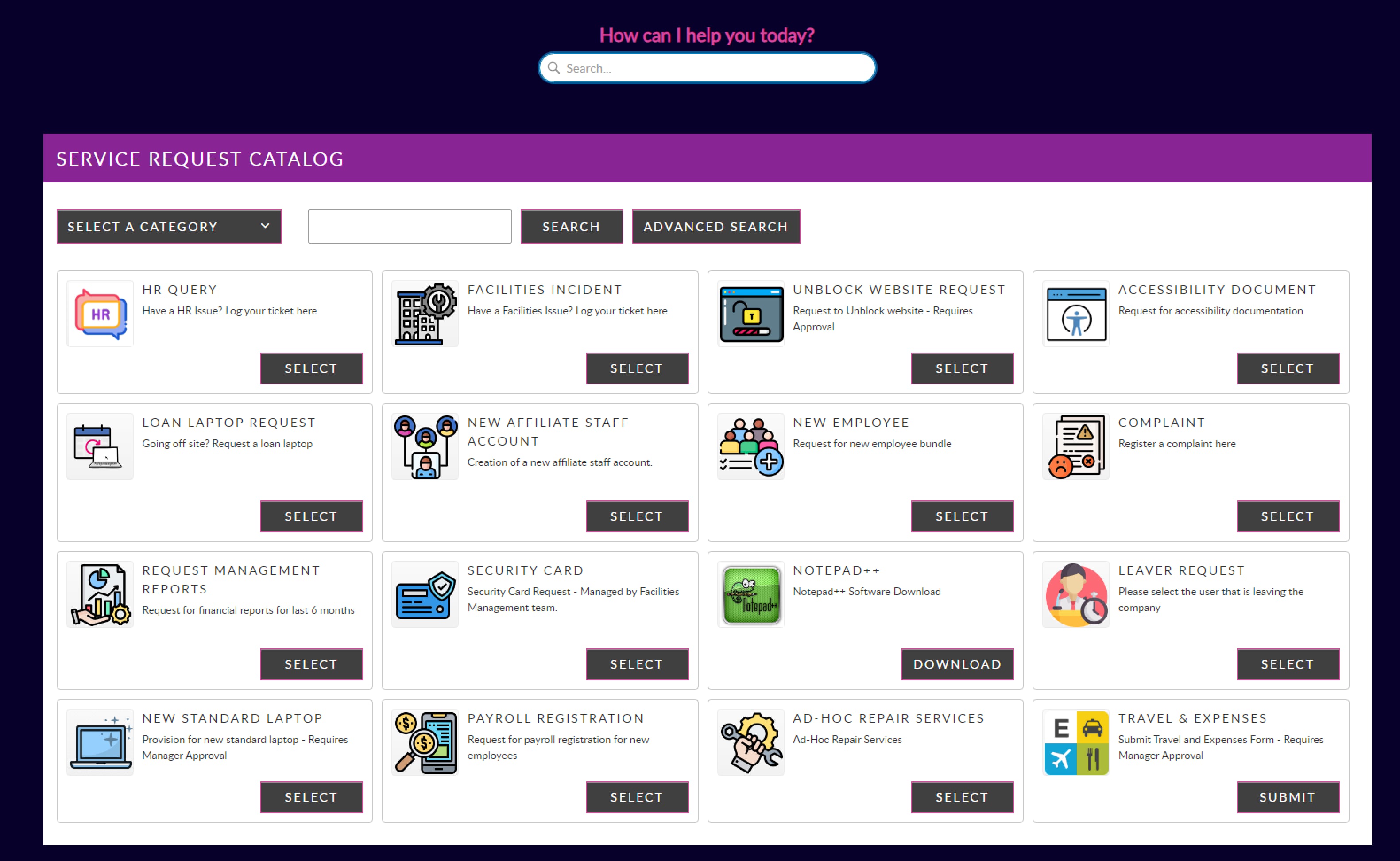Industry
Uses
Flexible Options
Services


For emergency services, the quiet work of IT, HR and Estates teams can be just as critical as the flashing blue lights on the street. When a control room system freezes, a hospital theatre air-handling unit fails, or a payroll issue stops a clinician from working a shift, lives and public safety can be put at risk just as surely as in a frontline incident. These are the scenarios that keep CIOs and Heads of Digital in police forces, ambulance services, fire & rescue organizations, and NHS trusts awake at night. Their biggest fear is an essential system failure that undermines a critical response.
Against this backdrop, UK Blue Light services are increasingly turning to best-practice IT Service Management (ITSM) to bring order, predictability and transparency to the way their enabling departments operate. Behind many of these efforts sits a single, unglamorous but essential engine: the service management platform. In other words, modern ITSM software is becoming the backbone that ensures support functions – from IT to HR to Facilities – run reliably so front-line teams can do their jobs.
One of the vendors deeply embedded in this space is Alemba. The Alemba Service Manager (ASM) software underpins service delivery for a number of large emergency and health organizations – including Barts Health NHS Trust, Greater Manchester Police, Royal Berkshire Fire and Rescue Service, and Northamptonshire Police and Fire & Rescue. With over three decades of experience in the sector, we know that the way support services are run can have just as much impact on outcomes as new police vehicles or medical equipment.





The operating reality for Blue Light organisations and NHS trusts is unforgiving. Critical systems must be available around the clock, with high availability and near-zero downtime. An outage in computer-aided dispatch, electronic patient records, radio networks, door access systems or hospital theatre equipment doesn’t just inconvenience staff, it directly affects emergency response times and patient care.
The technology landscape supporting these services is sprawling. Control room platforms, clinical systems, HR and payroll software, finance applications, estates management systems, fleet trackers, radios, mobile data terminals, collaboration tools – all need to work together, often across multiple agencies. Integrating these diverse systems (and keeping them updated) is a constant challenge. On top of this, sensitive personal and incident data is governed by laws like the UK Data Protection Act and GDPR, creating a tight regulatory environment for information handling Compliance failures could be devastating for public trust.
All of this plays out under perennial budget pressure. Leaders are expected to “do more with less,” even as demand grows. In fact, economists have warned that Britain’s public services could “buckle under the weight of… spending cuts” if further austerity hits according to The Guardian. Staff are understandably wary of change in already high-pressure roles, often resisting new processes that might initially slow them down. Meanwhile, routine workloads can be suddenly swamped by major incidents, seasonal peaks, or system failures – making scalability a must. Cooperation across police, fire, ambulance, and NHS organizations adds another layer of complexity, as each may run its own systems and processes in silos.
The question for senior leaders is no longer whether to professionalize service management, but how to do so in a way that supports operations rather than getting in the way. Modern CIOs and Heads of Digital need an approach that addresses their risks – downtime, data breaches, budget overruns, siloed teams – without adding bureaucracy.
Discover how Barts Health modernised ITSM with ASM to improve responsiveness, streamline processes, and support critical NHS operations across one of the UK’s largest hospital groups. Read more

A growing number of emergency services organizations are starting with a deceptively simple idea: give staff one place to go for help. Instead of expecting officers, clinicians and support workers to remember multiple phone numbers or emails for different departments, they provide a single self-service portal where any issue can be reported or request made. Whether it’s an IT outage, a uniform query, a rota change or a leaking station ceiling, everything goes through one front door.
Platforms like Alemba Service Manager enable this shift. ASM allows organisations to publish a clear catalogue of services, such as “New starter setup,” “Account access,” “Rota query,” “ID card request,” “Equipment fault,” etc., each with defined fulfillment workflows and target response times. Staff can log requests or report incidents through one interface, and behind the scenes these tickets are automatically routed to the right team (IT, HR, Estates, etc.) for resolution. The ITSM software tracks each request from intake to completion, even when fulfilling it requires hand-offs between departments.
The benefit, executives say, is not just convenience. A single unified “front door” makes it possible to understand the full picture of demand across enabling services, and to apply consistent standards for how work is prioritized and delivered. No matter what type of support someone needs, they encounter a familiar process and can receive updates from a central system. Managers, in turn, get visibility into trends, for instance, which stations or wards generate the most requests, and can adjust resources accordingly.

Alemba Service Manager – Unified Service Catalogue
Standardisation is at the heart of the approach. Leading organisations draw a clear line between incidents (when something is broken or degraded) and service requests (when staff need something new or changed). They apply common rules about how issues are categorized and prioritised, based on impact on public and patient safety, not just on who shouts the loudest. This shift helps resource-strapped teams move from reactive “firefighting” to proactive improvement.
This is where platforms like Alemba Service Manager come into their own. The software can automatically categorize and route incoming issues, escalate them when response times are at risk, and flag recurring problems. Over time, the data reveals patterns: the same location appearing repeatedly in incident logs, the same HR data error triggering payroll exceptions, or the same ambulance station ventilation system failing month after month. Rather than accepting this as background noise, forward-thinking emergency service IT teams are now using structured problem management to address root causes.
Alemba Service Manager links individual incidents to underlying problems and tracks the changes implemented to fix them. Its reporting and dashboards make repeated failures glaringly obvious to decision-makers. The result, over time, is fewer disruptions, lower support costs, and a more stable environment for frontline staff. Additionally, Alemba’s advanced AI capabilities automate the categorisation and prioritisation of incidents, improving accuracy and efficiency in triaging tickets. By letting machine learning handle routine classification, service desk analysts can focus on more complex or critical issues – a welcome efficiency in high-pressure environments.

ASM AI-Powered Incident Insights
See how Frimley Health transformed IT service management with ASM, boosting efficiency, service quality, and cross-department collaboration across a major NHS Trust. Read more

If keeping the lights on is one side of the coin, making controlled improvements is the other. Changes to critical systems are increasingly treated as business risks in their own right, not just technical IT tasks. When there’s a proposal to upgrade a control room dispatch system, a patient records application, an HR platform or a building management system, leaders insist on rigorous assessment, not only for technical feasibility but for potential operational impact. In an always-on emergency service, a poorly timed update can be as disruptive as an outage.
Platforms such as Alemba’s enforce structured workflows for change management, ensuring every change is assessed and approved before it happens. Within ASM, any proposed change record can capture detailed risk assessments, required approvals, and back-out plans. Crucially, business stakeholders like clinical safety officers, police or fire operations leads, and information governance teams can be built into these approval chains so that decisions reflect the full breadth of risk and regulatory compliance. Changes are scheduled thoughtfully, aligned with operational patterns to avoid known pinch points (for example, avoiding ambulance shift handovers or winter pressure periods for NHS systems).
For boards and regulators, the value is clear: fewer unexpected outages from uncontrolled changes, better evidence that risks are being identified and mitigated, and a complete audit trail when something does go wrong. A modern ITSM platform doubles as a risk register and change calendar that gives senior leadership peace of mind. It turns change management from a chaotic art into a transparent process where everyone knows the plan.

Change Management Risk Register in ASM
Beyond process, three other themes are emerging strongly in modern service management for emergency services: knowledge, asset visibility and mobility.
First, knowledge. Blue Light services are investing in cross-organisational knowledge bases that capture solutions, workarounds and FAQs across IT, HR and Estates. Rather than relying on individual expertise (or forcing people to reinvent the wheel), documented knowledge is made available to both staff and support teams. In practice, this means a nurse or police officer searching the portal might instantly find an article on how to reconnect a tablet to the network, just as a service desk agent can quickly look up the steps to reset a particular system. Alemba Service Manager facilitates this by suggesting relevant knowledge articles as tickets are being logged and processed. It can even push out urgent knowledge updates through channels staff already use, such as Microsoft Teams notifications, SMS alerts or email, to pre-empt known issues. The effect is to “shift left”: more issues get resolved at the first line, or even by the end-user themselves, without bouncing between multiple teams. This not only speeds up resolution but also frees up specialist support resources for the most critical problems.

Change Management Risk Register in ASM
Second, assets. Maintaining a single, reliable view of key assets – from IT systems and medical equipment to vehicles and building infrastructure – is essential. Tools like Alemba Discovery, powered by Lansweeper, automatically identify and map assets across the network, feeding accurate data into the CMDB within Alemba Service Manager. This allows every incident or maintenance task to be tied to a specific item, helping teams assess impact, spot recurring issues, and plan more effectively for replacement and investment.
Third, mobility. Many staff in emergency services rarely sit at a desk – and their support tools need to meet them where they are. Whether it’s a paramedic at an incident scene, a police officer on patrol, or a technician inspecting equipment in a fire station, they should be able to interact with support systems on the go. Organisations are therefore demanding mobile-friendly service management tools that work on tablets and smartphones. Alemba’s mobile app and responsive web interfaces are designed for exactly this purpose. Technicians and end-users alike can use mobile devices to log new tickets, update progress, attach photos (say, of equipment damage or error messages), and mark tasks as complete, all from the field. Notifications and alerts are pushed through channels staff find most convenient, whether that’s an app notification, an SMS, or an email. The result is faster response and resolution times, because support isn’t waiting for someone to “get back to the office” – the service management system is with them wherever they are.
Perhaps the most significant shift, though, is conceptual. Service management is no longer being viewed as merely an “IT thing” – it’s increasingly seen as the standard way to run enabling services across the entire organisation. This philosophy is called Enterprise Service Management (ESM), reflecting the expansion of ITSM principles to departments like HR, Estates, Fleet, Finance and beyond. These teams are gradually being brought onto the same platform, where they can have their own service request forms, workflows and service level agreements, but share a common data model, reporting, and governance structure.
For senior leaders, the promise is attractive: a unified view of how all support services are performing, where the bottlenecks lie, and how changes in one area might affect others. Dashboards can show, for example, the volume of open requests in HR versus IT, or highlight that a facilities issue is slowing down an IT deployment in a new building. Insights like these were hard to obtain when every department worked in separate tools or spreadsheets. Now, with an enterprise approach, CIOs and their peers can collectively identify improvement opportunities and allocate resources more strategically across the board.
For frontline staff, the experience also becomes far simpler. No matter the issue, be it a broken laptop, a question about overtime pay, or a broken station alarm, they know where to go and what to expect. There’s one portal, one set of credentials, and a clearer communication channel for updates. They’re not left wondering whom to call or chasing multiple departments for answers. In an environment as stressful as emergency services, that clarity and responsiveness can make a big difference in morale and effectiveness.
No amount of process or software will remove the inherent unpredictability of emergency and healthcare work. Blue Light services and NHS trusts will always face surges in demand, constrained resources, and intense public scrutiny. But as these organizations wrestle with rising pressures, the quiet machinery of best-practice service management, supported by platforms like Alemba Service Manager, is becoming an indispensable part of keeping citizens safe and patients cared for. Modern ITSM software helps ensure that behind every ambulance siren or police call-out, there is a well-oiled network of support functions working seamlessly to back it up. And for CIOs and Heads of Digital, that confidence in the “back office” translates into real peace of mind.